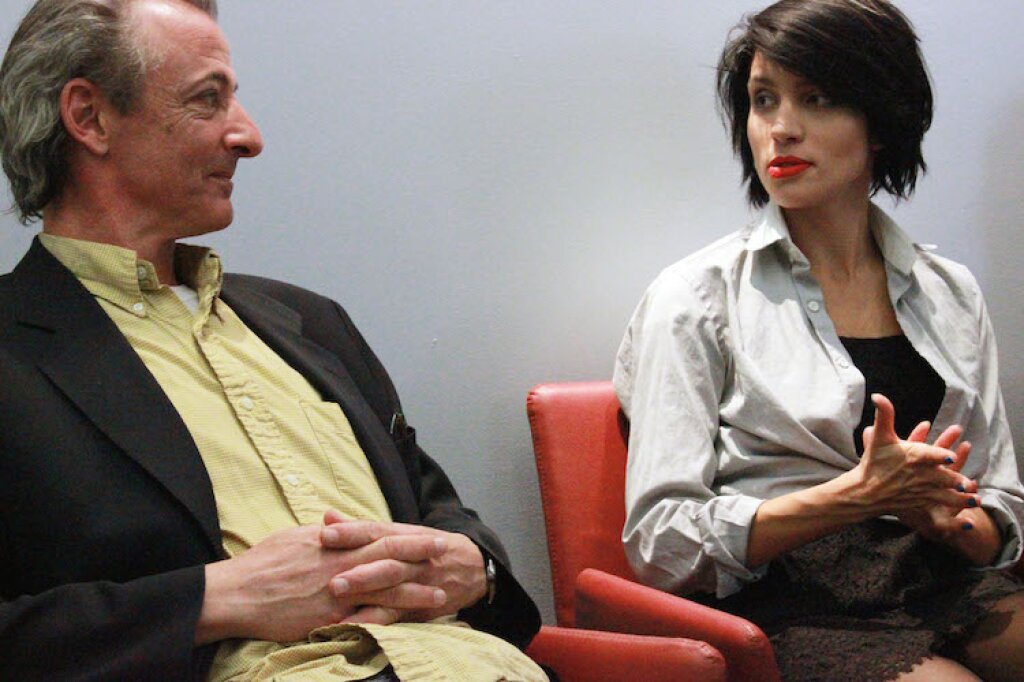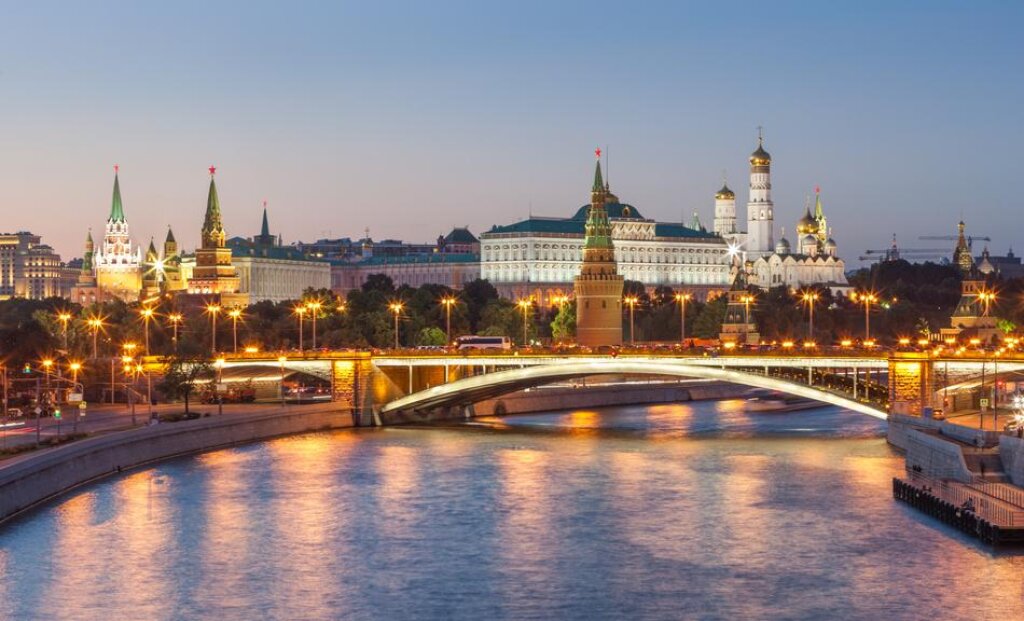Watch the video of the event here
On May 2, 2016, the NYU Jordan Center for the Advanced Study of Russia welcomed Slavic literary scholar Michael Holquist for a lecture entitled “On a Footnote in Bakhtin.” Holquist, Professor Emeritus of Comparative and Slavic Literature at Yale and a Senior Fellow at Columbia University, was introduced by Ilya Kliger, Professor of Russian and Slavic Studies at NYU. “You are all to a greater or smaller extent familiar with Professor Holquist’s incredibly broad ranging work, scholarly, pedagogical and – on behalf of a profession which I hope he will permit me to designate with its frequently forgotten, but proper name – philology,” Kliger said.
Holquist prefaced his talk by pointing to the convoluted chronology of Mikhail Bakhtin’s work. “Bakhtin is now so widely invoked that it is difficult to know what the name means,” he said. Today, there is confusion regarding the gap between the figure born in 1895 who died in 1975, and the “‘Bakhtin’ in quotation marks” – the ways in which Bakhtin has been defined in subsequent scholarship. While Bakhtin himself argued that all Bakhtins live inside quotation marks, Holquist questioned the dichotomy in order to allow for the possibility of an un-quotation-marked Bakhtin. “My reservation is based on one of the few points where there is some consensus among critics: the central place in the canon occupied by Bakhtin’s lifelong meditation on the Self-Other distinction, as a complex dialogue between author and hero,” Holquist said. While the speaker said he would keep in mind the constantly emerging nature of the phenomenon of Bakhtin, he noted that there is no grand, coherent, all-inclusive theory of dialogism. “Rather, I see a series of attempts over time to define the mystery of relation itself, where relation is understood not merely as a specific relation [between Self and Other], but is a master category governing both thought and action,” Holquist said.
While it is difficult to pinpoint a master question that animates Bakhtin’s topics, it is possible to recognize recurring patterns in the way he crafts his art. “This question goes back to pre-Platonic thinkers, but is also at the heart of our own digitally driven age,” Holquist said. Bakhtin is preoccupied with a search for tools to think about how things relate to one another. Each time Bakhtin examines a relation, it is grounded in simultaneity – “the enigma of how disparate things, ideas or people can nevertheless exist together in time, space and society,” the speaker explained. Another theme that pervades Bakhtinian texts is “architectonics” – a term to understand how things go together and how art relates to life. Beyond this smaller question is the broader question of how to interpret the relation of parts to wholes in general. “The major responsibility of humans is to join the things that we encounter in the world that would otherwise remain alien to one another,” the speaker added. “The making of connections is the core of understanding.”
What might be called the “architectonic imperative” provides a way into making sense of one of the major problems for students of Bakhtin, namely his relationship to Kantian and post-Kantian philosophy, Holquist said. Referring to the title of his lecture, he said that “Bakhtin is not particularly generous in footnoting and when he does provide a footnote, it is not always helpful.” To Holquist, however, there is something breathtaking about Bakhtin’s rejection of the transcendental aspect of Kant’s revolutionary epistemology, as showed in a footnote to a 1937 essay entitled “Forms of time and chronotope in the novel.” Bakhtin is aware that the transcendental is a feature of the whole system for Kant, but in a minor form of commentary – a footnote – he rejects it, Holquist explained. Instead of Kantian “transcendence,” which Bakhtin used to explain the meaning of “beyond human experience,” Bakhtin employs the term “transgredience,” which links the categories of time and space. Transgredience is used by Bakhtin to describe the extraordinarily complicated drama that emerges when two people confront one another in life, each negotiating the place of himself. “At the time in which we meet, we cannot perceive everything in the space in which we meet,” Holquist said, highlighting the fact that the Other belongs to a very different set of conditions in contrast to the Self.
Holquist then explained Bakhtin’s use of the term “chronotope” in his essay, derived from a 1935 lecture by the physiologist Aleksei Ukhtomsky, who studied anticipation in human neural activity. “Ukhtomsky worked on the [human] nervous system as if it worked as a communication system,” Holquist said. In fact, his research found that the nervous system was architectonic. The science of chronotechnology, novel in Bakhtin’s time, informed that the body cannot be conceived with any singularity. “It is less a space than a quivering set of relations,” Holquist said. “The body is in constant communication with the outside world. It is in its essence dialogic.”
In closing, Holquist returned to Bakhtin’s critique of the transcendental in Kantian philosophy. “Kantian theory is still haunted by the sacred,” Holquist said, “which dictates from outside how each of us should negotiate our own existence.” Meanwhile, transgredience, the term of Bakhtinian theory, “is the enabling factor that allows Bakhtin certainness in dialogue as a key to human understanding.”
In the following Q&A, Kliger posed a question to Holquist about the centrality of the narrative in Bakthin’s work. “One way we move from transcendence to transgredience is by moving from meditating on time to mediating on narrative,” Kliger said. In response, Holquist said that knowledge has to be organized into a narrative of some kind. “Bakhtin’s constant obsession with the novel is that he sees it as a laboratory for experimenting with the limits of what can be known in a fallen world.” Another question broached the topic of failed dialogue or failed elements between the system and the body and what place this has in Bakhtinian theory. Holquist said that Bakhtin did take account of failure. In fact, “there are enormous parallels between Bakhtin and existentialism,” he said. “It manifests in the recognition that there is a way that the world could work beneficially, but it doesn’t.”
Finally, Kliger inquired about the many “Bakhtins.” “There are four prominent in my mind: postmodernist Bakhtin, liberal democratic Bakhtin, Russian Orthodox Bakhtin, and Neo-Marxist Bakhtin,” he said. “How do you integrate and negotiate with these Bakhtins?” Holquist noted that it is part of Bakhtin’s genius that he so various. “I think anybody who conceives a unitary Bakhtin is not seeing the point,” he added.



